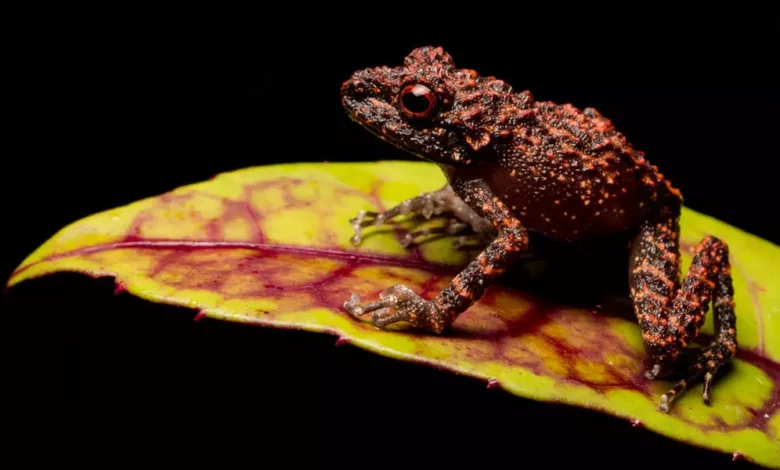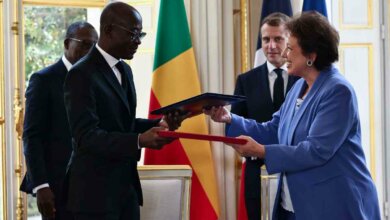New Warty Frog Specie Discovered in Madagascar, Africa

Following a shower, Carl Hutter noticed the frog while on a walk near their tent. The frog belongs to the Gephyromantis genus, a group of frogs that can only be found in Madagascar. Marokoroko, the frog’s scientific name, is a Malagasy term that describes the frog’s wrinkled skin. It is called Rugose Forest Frog in English.
“We wanted to have a species name that resonated with the local people and would be descriptive in the Malagasy language to hopefully help in its conservation,” Hutter said.
He had never seen anything like it in Madagascar’s high-elevation jungles, with its warty skin and blazing crimson eyes. The country is home to a diverse range of amphibians, although the bulk of new species discovered are so-called cryptic species, which resemble frogs previously identified by scientists.
Researchers were able to distinguish these new species based on their genetic differences using a process called DNA barcoding, which examines tissue samples to build systems of genetic markers.
It’s highly rare to uncover a new frog species in an area that has already been extensively studied, such as Madagascar’s Andasibe-Mantadia National Park.
It was also the first sighting of the species for the team’s Malagasy guides. The researchers spent several years gathering specimens, recording recordings of the frogs’ cries, and examining its DNA after the first discovery in 2015.
It was ultimately classified as a new species last week, and a study in the journal Zoosystematics and Evolution documented it.
Because of the diurnal frog’s solitary nature, which appears to surface only after heavy rains, it took numerous trips over several years to collect enough specimens and recordings for taxonomic categorization.
Read Also Africa’s Approach to Wildlife Conservation Needs to Change
The frog does not require running water because of its lengthy fingers and toes. It instead makes its home on the forest floor, where it reproduces in little puddles trapped in leaf litter.
When the frog sits on the upper surfaces of leaves placed a short distance above the ground after rain, it emits its call, which is described as a strongly pulsed trill” or groan that is scarcely audible to humans.
The frogs would go silent whenever the researchers approached. They had to place them in plastic collecting bags and record their calls from a distance of around a metre. However, there is a risk that such cries would go unheard forever, necessitating the urgent need to protect nature and biodiversity.
Only two of the four known habitats for the rugose forest frog have been designated as protected. Andasibe-Mantadia National Park and Vohimana Special Reserve are the two. Slash-and-burn agriculture threatens the remaining woodland patches at Vohidrazana and Tavalobe.
The frog has been classified as an endangered specie by the research team, according to the criteria of the International Union for Conservation of Nature.
Abeeb Lekan Sodiq is a Managing Editor & Writer at theafricandream.net. He’s as well a Graphics Designer and also known as Arakunrin Lekan.




